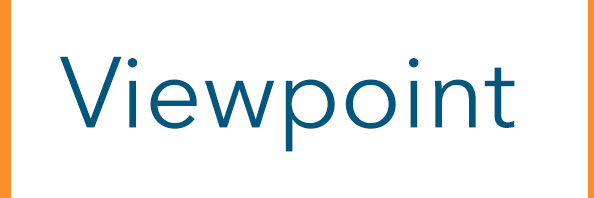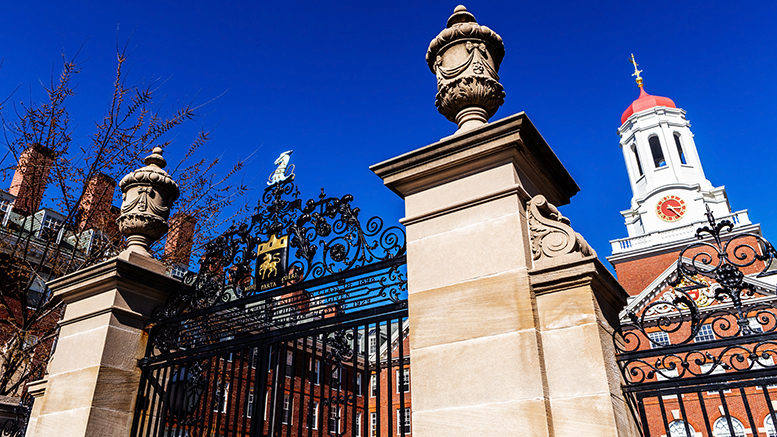It may not always take money to make money, but it sure helps.
Last year, according to the recently released 2021 NACUBO-TIAA Study of Endowments, Harvard University’s famed endowment grew from $41.9 billion to $53.2 billion, an astonishing 27% return on its investment, earning America’s oldest and most famous university, with its 5,000 or so undergraduate students, a whopping $11.3 billion.

According to its annual financial report, the university spent just over $2 billion, or around 5%, from its endowment toward its total $5 billion operating expenses last year, preserving a healthy $9 billion or so for future rainy days.
Harvard’s undergraduates are about a quarter of their total enrollment (the Business, Law, and Medical Schools, along with other graduate programs, comprise the rest), so rough math suggests that total expenditures per undergraduate student are around $250,000 a year.
Here at Northern Essex Community College (NECC), we have around 5,000 undergraduate students, too. Our annual budget last year was just over $60 million, and our endowment (also boosted by a friendly stock market) grew to $6 million. Our total expenses per student are around $12,000 a year.
We’re pretty much like the rest of the state’s public community colleges, which last year collectively spent just over $800 million on their 65,000 undergraduate students (a little over $12,000 per student).
The extra money that Harvard’s endowment earned last year was nearly fifteen times as much as all of the community colleges in Massachusetts combined spent.
Here is a truly modest proposal:
Harvard should take $600 million of last year’s earnings (a mere 5.3% of the haul, squarely in the middle of the university’s annual “targeted payout range” for its endowment) and work with the state’s community colleges to create $40 million endowments at each one.
Then, to ensure its investment is truly meaningful, Harvard, which currently accepts very few transfer students, should partner with those 15 community colleges to create direct, guaranteed transfer pathways for 30 of their students, two from each college, each year (less than 1.5% of this year’s freshman class).
Harvard should do this not out of charity, but because it’s the right thing to do, and a strategically smart move for arguably the world’s most strategically smart university.
Here’s why.
The myth of the ‘private’ college
A few years ago, economist Richard Vedder wrote a provocative piece for Forbes, “There Are Really Almost No Truly Private Universities,” in which he catalogued the various ways that taxpayers provide enormous support for what we think of as “private” universities. Pell grants, tax credits and federally backed student loans, for example, all allow private universities to charge more for their tuition than an otherwise unsubsidized “free” market would actually allow.
Tax-deductible donations provide needed capital for buildings (and growing large endowments), while state and local exemptions from property and sales taxes further reduce the cost of doing business, even for amazingly well-funded institutions. How much are all these public subsidies worth to a university like Harvard?
It’s hard to say exactly, but a few years ago, the Nexus Research and Policy Center examined the impact of per-student tax subsidies at a range of higher education institutions and discovered enormous differences, ranging from $22 to $1 between elite private universities and local regional four-year campuses, to as much as $44 to $1 between those wealthier universities and local community colleges. As an example, here in Massachusetts, Nexus estimated Massasoit Community College’s tax subsidy at $4,100 per student, and Harvard’s more than ten times higher at $48,000 per student.
In fairness to Harvard, the university has acknowledged some responsibility to contribute to their local communities, and pays both Boston and Cambridge a few million dollars each year through voluntary PILOT (Payment in Lieu of Taxes) agreements with those cities. However, the amount Harvard pays is a small fraction of what actual taxes would cost, and is regularly less than the cities request, leading the Massachusetts House of Representatives to take up legislation last year that would require non-profit organizations like the Crimson that own at least $15 million in property to pay 25% of what they would have to pay if they were not exempt from taxes.
Of course, the Massachusetts legislature may be the least of Harvard’s worries. Congress’ 2017 Tax Cuts and Jobs Act imposed a new tax on around 40 private nonprofit colleges and universities (including Harvard). Institutions enrolling at least 500 students that have endowment assets exceeding $500,000 per student now pay a tax of 1.4% on their net investment income each year.
For Harvard, that has meant around $50 million in new federal taxes each year since 2018, still a small fraction of the 20% capital gains tax assessed on the nation’s wealthiest individuals, which would have cost Harvard closer to $700 million last year.
But that higher capital gains tax, and other imposing scenarios, may be waiting just around the corner for Harvard and more than 100 other universities with mega-endowments. Several bills have been presented in Congress over the past few years that would reduce, or entirely eliminate, some of the non-profit benefits received by the nation’s wealthiest universities.
For example, last May, Arkansas Sen. Tom Cotton introduced “The Ivory Tower Act,” legislation that, among other things, would levy a 1% tax on the fair market value (not just the net investment income) of endowments held by the richest private colleges. The new revenue earned by the tax would be used to support vocational education and training (the kind not typically offered at Ivy League schools).
That zinger would have cost Harvard $532 million last year — and similar amounts every year afterward.
There are many good arguments for not imposing taxes like this on private universities, or eliminating tax deductions for their donors. In “Attacks on University Endowments Are Misguided,” Sean Parnell, vice president of public policy for the Philanthropy Roundtable, explains that doing so would overlook the many benefits these institutions provide their local communities and the nation as a whole, and would create a new “hierarchy of giving” in which some charities are deemed worthier than others of donations.
Still, even if the concept of these universities’ sheltered non-profit status seems worth supporting, there is a rising chorus of lawmakers eager to see soaring college endowments more heavily taxed, and unless other changes are made, it seems less a question of “if” and more of “when” new measures are put into place.
By taking proactive steps now, like investing in and creating transfer pipelines with Massachusetts community colleges, Harvard can demonstrate it is using its powerful financial position to expand its reach and provide greater benefit to underserved students and the Commonwealth’s workforce.
The myth of the ‘public’ college
Just as there may not be any truly “private” colleges left anymore, there are relatively few truly “public” colleges still around either.
A quarter century ago, community colleges like NECC were approximately 75% state-funded. Today, the 15 community colleges in Massachusetts are mostly between 35% and 45% state-funded, which means we are more than half private.
The shift reflects a change in the higher education “social compact” that used to consider a college degree a public good, worthy of significant public funding, not just in the form of state funding for community colleges and state universities, but federal Pell grants that used to pay nearly all of the expenses for low-income students to attend college and now cover about a third of the cost of state universities, and mostly just tuition expenses at community colleges.
As a result, students and families bear the greatest proportion of college-going expenses, often in the form of student loans, and these newly evolved “public-private colleges” must pay increased attention to fundraising, employer sponsorships, return on investment, entrepreneurial business models, and other forms of enhanced revenue generation — just to keep the doors open.
Most challenging of all, the colleges with the least amount of funding (community colleges) serve the students with the greatest needs.
In all of higher education, we serve the largest proportion of first-generation students, low-income students and students of color — groups that, despite well-described efforts, the nation’s most elite universities are still largely overlooking.
And we specialize in preparing those students who may not have been ready for the academic rigor of a four-year university as they are graduating from high school with the resiliency and skills they will need to succeed at Harvard or anywhere else.
And here is where sharing some of last year’s unexpectedly abundant endowment earnings with the community colleges in their home state of Massachusetts becomes exceptionally smart strategy for Harvard and their donors.
From equity talk to equity walk
Competition for undergraduate seats at Harvard and other “selective” universities is intense. When you have 60,000 applicants and only admit 2,000, yet the applications keep coming, rejection is clearly a selling point
But at a time when nearly every college and university is strongly focused on equity — from recruitment to admissions to graduation — even the Ivy League institutions must be admitting more of those first-generation, low-income, students of color found on community college campuses everywhere, right?
Not exactly.
In a Washington Post story last year, “Harvard and Its Peers Should Be Embarrassed About How Few Students They Educate,” Jeffrey J. Selingo, the author of Who Gets in and Why: A Year Inside College Admissions, notes that, “Of the top 50 national universities in the U.S. News ranking, 16 are public and 35 are private (the numbers add to 51 because of a tie). At the public schools, an average of 26 percent of students receive Pell Grants. At the privates, the figure is just 15 percent.”
As a point of comparison, in a typical year, more than 50% of NECC’s students receive Pell grants, a rate similar to community colleges across Massachusetts and around the country.
So, the wealthiest universities are admitting far fewer low-income students than any other segment of higher education. What about first-generation students and students of color?
It’s a mixed bag at best. Nationally, over half the undergraduates on American college campuses are considered “first-generation” (neither parent completed a bachelor’s degree).
However, at Ivies like Brown, Princeton and Yale, the proportion of first-gen students admitted last year ranged from 11% to 17%. Harvard actually rose near the top among the elites, boasting its lowest admittance rate ever (3.4% of their nearly 60,000 applicants), even as the proportion of admitted first-generation students rose to 20.7% and Pell Grant-eligible students to 20.4%, the first time either group topped one-fifth of the freshman class.
Harvard’s progress in admitting first-generation and low-income students is important and deserves recognition, but they are still a very long way from reflecting the broader tapestry of America today.
And students of color? That one is a bit tricky.
According to the American Council on Education, just over 45% of undergraduates are students of color. Elite universities like Princeton, Yale, Cornell, and Harvard take pride in noting the increased proportion of students of color they are admitting, particularly Black and Latino students.
However, while the numbers may be climbing, much like admissions of first-generation and low-income students, they are climbing very, very slowly. In The Inequality Machine: How College Divides Us, Paul Tough notes that, while 15% of American high school students are Black, only 8% of the students at Ivy League and other highly selective universities are Black.
And an increasing proportion of those admitted Black students, according to Tough, are from mixed-race families, immigrant families from Africa and the Caribbean, and international students who can afford to pay full tuition. Many have also attended prestigious prep schools like Phillips Academy in Andover which, while just down the street from NECC, may as well be on the far side of the moon for most of our students.
They are not, for the most part, low-income students from often struggling urban schools across America.
And this is just one of many reasons that, according to the Pell Institute’s annual “Indicators of Higher Education Equity in the United States” report, children of wealthy families are more than eight times likely to graduate from college (77%) than children from poor families (9%).
By partnering with the Commonwealth’s community colleges, which overwhelmingly enroll the largest proportion of first-generation, low-income students of color in all of Massachusetts higher education, to build our endowments and create direct transfer pipelines, Harvard can help turn that distressing trend around; something the university and their donors can be proud of.
At a 5% annual payout, a $40 million endowment at each community college in Massachusetts will generate $2 million annually, which, if used like Harvard’s endowment, would boost operating budgets by around 3%–more than any annual increase in the 11 years I have been president of Northern Essex Community College (and quite likely, one of the largest increases in our history).
And that relatively modest increase would be enough to boost financial aid for many students in need and hire more academic support staff to help more students graduate and, if they choose, transfer to other colleges and universities—like Harvard.
Through this partnership, Harvard will also be creating an admirable model for other elite institutions to follow.
Yale, which boasts a $42 billion endowment that gained 40% last year, could partner with Connecticut’s 12 community colleges, which have been experiencing significant financial woes for years, and offer some hope to their 38,000 students.
Princeton, with its nearly $40 billion princely endowment (that earned a staggering 47% investment gain last year) could partner with the 19 community colleges in New Jersey and their 122,000 students.
And so on.
In the process, advancement professionals and transfer advisors at all of the partnering colleges could work closely with each other, learning, adapting, and expanding their networks; while significantly boosting opportunities for underserved students and helping those universities move from equity talk to equity walk.
We’re ready when you are, President Bacow. Let’s make this happen.
* * *

Dr. Lane A. Glenn is president and Allison Dolan-Wilson is vice president of advancement at Northern Essex Community College in Massachusetts.





